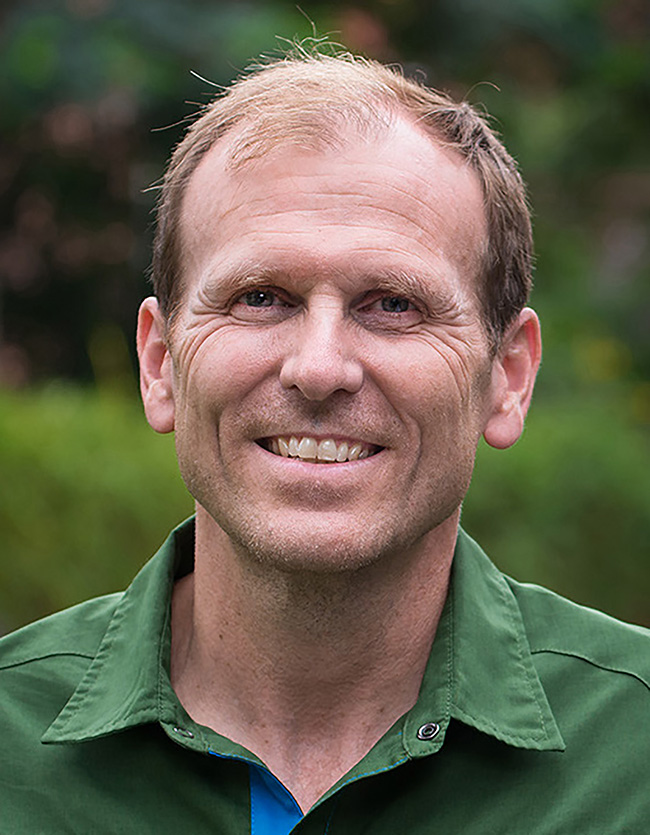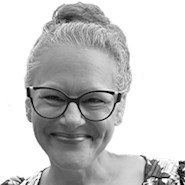
Gary White is the co-founder and CEO of two companies: Water.org, an American nonprofit developmental aid organization, and WaterEquity, an asset management firm working to end the global water and climate crisis. He chatted with Civil Engineering about his advice for how civil engineers can give back to their communities by identifying social justice problems and developing solutions — just as he and his business partner, actor and Academy Award winner Matt Damon, are doing. (The pair have also shared their successes, failures, and ongoing efforts to solve the global clean water and sanitation access crisis in their recent book, The Worth of Water.)
1. How did your background in civil and environmental engineering inspire your commitment to make water access and sanitation in impoverished areas a reality?
When I was an undergraduate at the University of Missouri in the early 1980s, I was attracted to civil and environmental engineering because it was a way to also work on social justice issues. At that point, more than a billion people didn’t have access to water, and more than 2 billion didn’t have access to sanitation. And I saw working on that problem as a natural place for how an engineer could strive to make the world a better place.
2. Why is access to clean water such a crucial and important part of life in impoverished areas?
Water is the foundation for everything. Economic development cannot take root until you have access to water and sanitation. And no city has ever grown up — anywhere in the world — without having reliable access to water.
If you look at it in the context of a single family, lack of access to water holds them back in so many ways. Typically, girls and women are responsible for collecting water. The fact that you might spend three hours a day walking to collect water, that’s time you’re not spending in school, taking care of your family, growing food, or working at a paying job.
I think one illustration of this is a grandmother I met in Uganda before COVID-19. Her name was Mama Florence, and she would spend hours every day on her bicycle trying to find and collect water. And through Water.org’s water credit program, one of our local partners loaned her about $300. She used that loan to put in a well, pump, and storage tank.
She used the water to improve the health of the family, of course, but she also used it to grow a garden near her home. Once she had vegetables, she was able to use some of the waste to feed pigs, and those pigs also fed her family. And then she started making bricks because the clay soil around her house was suitable for that purpose and she had the necessary water. She used those bricks to put an addition on her house. And she now rents out those rooms.
So you can see, before she had water, it was just this daily ordeal of trying to get water. And now that she has water, she’s built a financial future for herself, her children, and her grandchildren.
3. What practical steps can engineers take to identify problems they might be able to help with?
I recommend taking an analytical approach. Civil engineers are problem-solvers at their roots, so begin by asking, “What are some of the world’s biggest problems out there?” to see which one you are drawn toward.
And once you see a problem — for me it was water and sanitation — see who else has tried to solve it and team up with them. That’s what I did: Right after graduate school, I went to work in New York for Catholic Relief Services, and I was in charge of their Latin American and Caribbean water and sanitation programs. I was leaning in and learning about the problem. And once I learned about the issue and all its facets, I recognized that there were limitations to how others were solving it. That’s when I decided to start an organization to tackle the issue myself.
And so that’s my advice for the third step: If there isn’t an existing solution that is suitable for the problem, go out and try to solve it yourself in a more entrepreneurial way.
There are going to be a lot of doors that are slammed in your face and a lot of disappointments. But if you believe in what you’re doing, you just have to stick with it. If you have a big problem, you have a unique insight, and you work hard and are tenacious, I think you can change big social issues.
4. What questions should engineers ask themselves to ensure their ideas are manageable?
The magnitude of the idea needs to equal the magnitude of the problem. If you deeply believe you can solve a particular problem, are you willing to sign up for all the setbacks that you’ll see along the way? You need to be one part practical, one part audacious. And it’s hard to find that balance.
The other key thing, I think, is to look at the scale of your solution and the scale of the problem. We had a very traditional model: working with local organizations to drill wells that were paid for through philanthropy. And as an engineer, you poke your head up and say, “The problem I’m trying to solve includes more than a billion people. It’s so out of proportion with the effort spent to drill one well at a time.”
And that’s when the engineering and the analytical problem-solving come in. The beauty of it is when you find out the problem actually contains its own solution, it’s just about nudging forces in different ways as opposed to solving it with a big, new solution.
For us, the solution became less about engineering and more about finance. We had to have the finances and ability to give people access to small loans so that they could solve their individual problems.
Even though it doesn’t make sense on the surface that we could use the capital markets to solve the clean water and sanitation access problem — because conventional wisdom tells you everybody is too poor — when you analyze the problem, you understand that there are a lot of people who can, through a loan, afford the solutions they need.
We are talking about people who are collectively spending, literally, billions of dollars a year in coping costs. They are walking to collect water. They are sick because of their water. They are oftentimes paying for water in urban areas to sketchy water vendors. And all these costs they are paying for water are far more than if they had a water connection and were paying a water bill. So the whole concept of moving the capital around in the system enables a much more efficient solution to the big problem.
Water.org and WaterEquity don’t make household-level loans themselves. What we’ve done is nudge the microfinance sector toward water and sanitation lending. Initially, lenders saw these types of loans as too risky. What they were used to lending for were tangible, quick-return items, like a cow or a sewing machine. Loans where a borrower could be selling milk or a sewn product by the end of the week and have cash flow to repay the loan.
What lenders didn’t understand were all these coping costs that people were already paying for water and sanitation services. If they didn’t have to pay those costs, then they could repay a loan. We provide grant money to de-risk the loans so lenders can do market research and talk to people to see how much they are paying for water, design new loan products, and research simple water technologies, such as water filters, so they would know what to look for.
We have about 150 financial partners around the world we work with to do these types of loans. They report back to us how many loans they are making and how many people are getting connected to water. We do random sampling so that we can verify that the loans are being used for the right purposes.
5. What overarching goals should inform engineers’ planning in the near term?
In the near term, it’s about immersing yourself in the problem you feel drawn toward. I did that as an undergraduate through my work with ASCE when I was a WISE intern — Washington Internships for Students of Engineering — in D.C. in 1986. I remember pitching the ASCE board to put money into a project to help students travel to other countries to learn about local engineering challenges. I didn’t get the funding from ASCE for the program, but I did get sent to Washington to do the internship, and that’s where I dug into this global clean water and sanitation problem and deeply researched it.
Once you learn about the topic, you mix that knowledge with your passion to change the problem, and then it’s a matter of just trying to find others to support the work, either with their time or through their funding.
6. How about for the long term?
It really always is being willing to be proved wrong about your solution and being willing to evolve when necessary. At Water.org, we lean into things, not because they are for-sure things, but because — going back to engineering, problem-solving, and math — you immerse and iterate, right?
Sometimes, there are really elegant mathematical, precise solutions to things. But there are other times where it’s more heuristic.
7. What major pitfalls should engineers watch out for to maximize their efforts?
There are different categories of pitfalls, but there is a guiding principle to solving issues: Once you find a block or a hurdle, you have to navigate around it by thinking very differently.
For example, one pitfall might be that your model of impact just isn’t right. Like I was saying, we were drilling wells. There is nothing wrong with that, but it wasn’t going to be a solution for everybody to get water.
Another pitfall that nonprofits face is related to funding. Charity is fickle, right? And just because a donor provides millions of dollars one year and you deliver the expected results, that doesn’t mean you’ll get the same amount of funding the following year. The solution for us was to come up with a revenue-generating model — WaterEquity — and build from there.
Catherine A. Cardno, Ph.D., is the managing editor of Civil Engineering Online.
This article first appeared in the July/August 2022 issue of Civil Engineering.



